Evolution
of Fault Tolerance
in PostgreSQL

Gülçin Yildirim Jelínek
CERN, Jan 2020
Select * from me;
MSc, Computer and Systems Eng @ Tallinn Technical University
BSc, Applied Mathematics @ Yildiz Technical University
(was on) Board of Directors @ PostgreSQL Europe
Organizer @ Prague PostgreSQL Meetup
Working with databases for 10+ years
(lives in) Prague
(from) Turkey
(is) New Mom

Agenda
-
PostgreSQL Fault Tolerance: WAL
-
Fault Types in Database Systems
-
Transaction - Commit - Checkpoint
-
Replication Methods in PostgreSQL
-
Failover and Switchover
-
Managing Timeline Issues: pg_rewind
-
Synchronous Replication (synchronous_commit)
-
Logical Decoding
-
Backups
Fault Tolerance
A fault-tolerant design enables a system to continue its intended operation, possibly at a reduced level, rather than failing completely, when some part of the system fails.
Fault Types in Database Systems
-
User application bugs
-
Administrator (human) errors
-
Database software failures
-
Operating system failures
-
Hardware failures (disk)
-
Network failures
-
Datacenter-level events
PostgreSQL is Robust!
- Transactions + Transaction Log = Automatic Crash Recovery (Software failure)
- Data block checksums (Disk or file system faults)
- Multiple backup mechanisms (Full PITR)
- Low-level diagnostic tools (pageinspect)
-
Database replication is supported natively.
- Physical replication (page corruption can propagate to standbys)
- Logical replication
WAL
Write ahead logging
mechanism
is the main
fault tolerance
system
for PostgreSQL
which ensures
durability of any db changes.

Transaction?Commit?
Database changes themselves are not written to data files on disk at transaction commit.

Standard SQL Transaction Isolation Levels
Writes to data files are done sometime later by the background writer or checkpointer on a server.
Checkpoint
Crash recovery replays the WAL, but from what point does it start to recover?

PostgreSQL Replication
Database replication is the term we use to describe the technology used to maintain a copy of a set of data on a remote system.

Replication History
-
PostgreSQL 7.x
- Replication should not be part of core Postgres
- 3rd party replication (usually trigger-based)
-
PostgreSQL 8.0
- Point-In-Time Recovery (WAL)
-
PostgreSQL 9.0
- Streaming Replication (physical)
-
PostgreSQL 9.4
- Logical Decoding (changeset extraction)
-
PostgreSQL 10+
- Logical Streaming Replication
2000
2005
2010
2014
2017
Physical Replication
WAL over network from master to standby
- Streaming changes: using internal protocol (sender and receiver processes)
- Sending files: scp, rsync, ftp
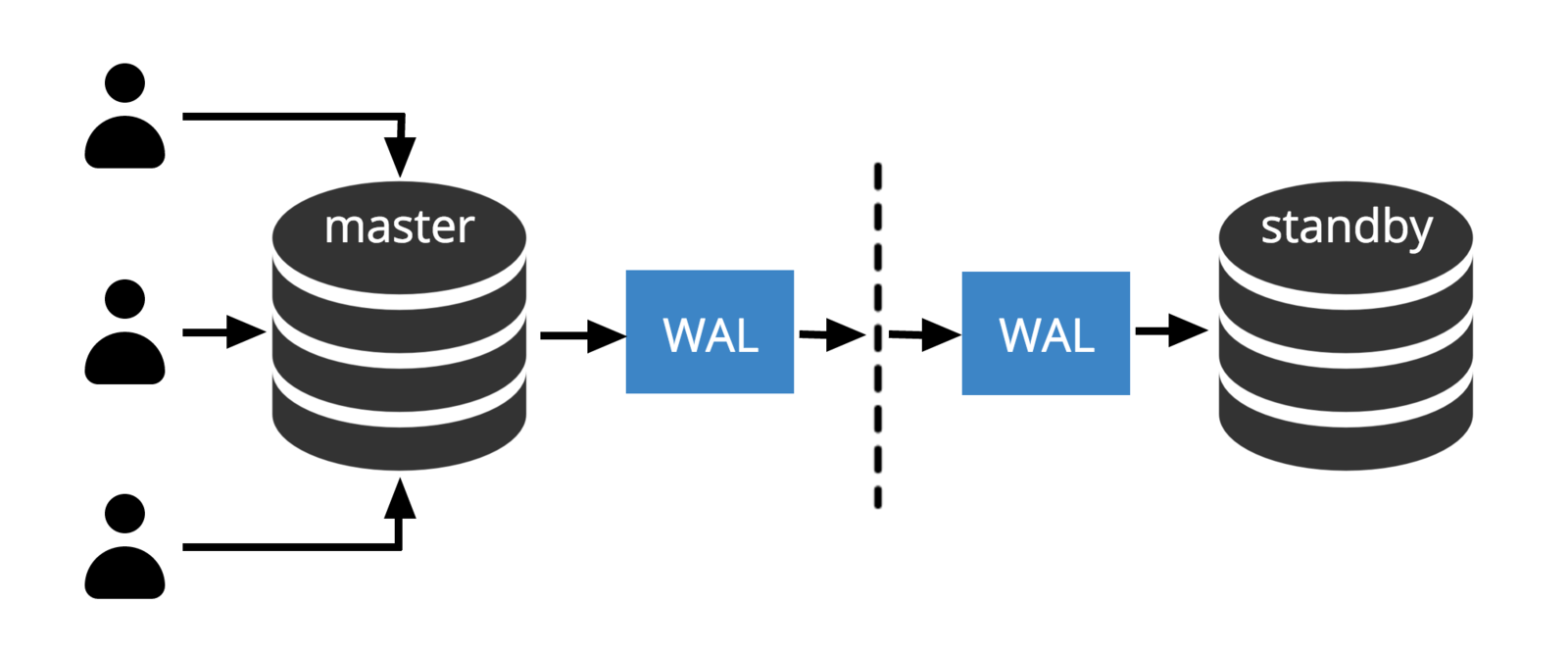
WAL and Replication
wal_level parameter determines how much information is written to the WAL.
| WAL level | Suitable for |
|---|---|
| minimal | crash recovery |
| replica (default at PG12) | physical replication
file-based archiving |
| logical | logical replication |
Failover and Switchover


Failover
Switchover
Timelines
Timelines provide protection from connecting to the wrong upstream after promotion (failover, switchover).
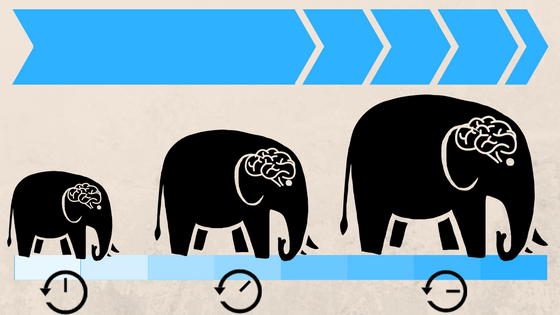
TL1
TL2
Master (Old master)
Standby (New master)
Failover
- There are outstanding changes in the old master
- Timeline increase represents new history of changes
- Changes from the old timeline can't be replayed on the servers that switched to new timeline
- The old master can't follow the new master
TL1
TL2
Master (Old master)
Standby (New master)
Switchover
- There are no outstanding changes in the old master
- Timeline increase represents new history of changes
- The old master can become standby for the new master
TL1
TL2
Master (Old master)
- Outstanding changes are removed using data from the new master
- The old master can follow the new master
TL1
TL2
TL1
TL2
Standby (New master)
pg_rewind (9.5+)
Synchronous replication guarantees that data is written to at least two nodes before the user or application is told that a transaction has committed.
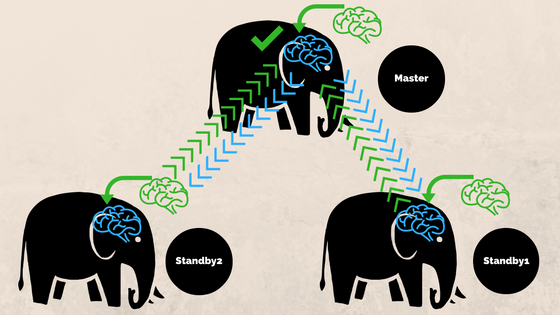
Synchronous Replication

How Commit is Replicated?
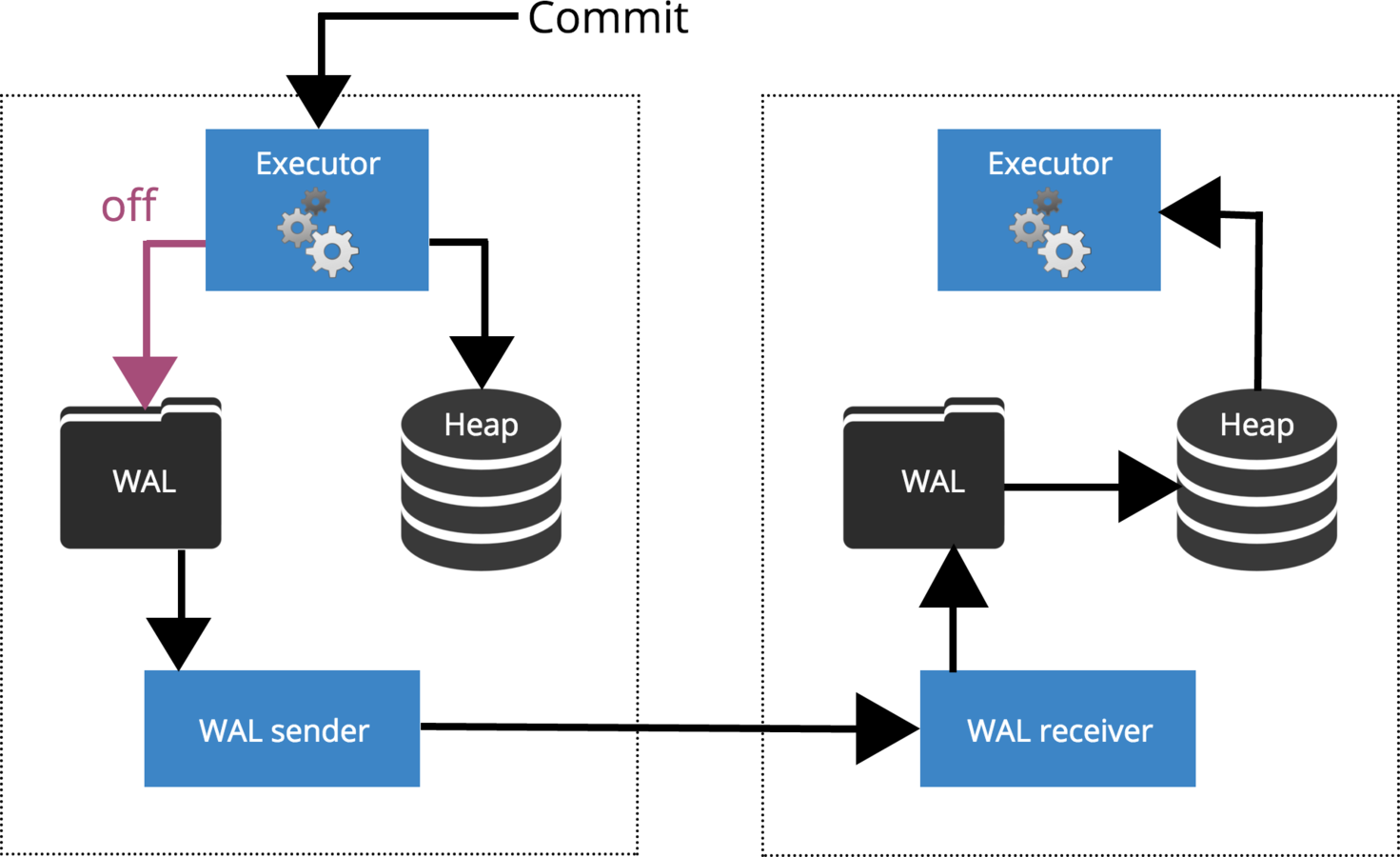
synchronous_commit = off
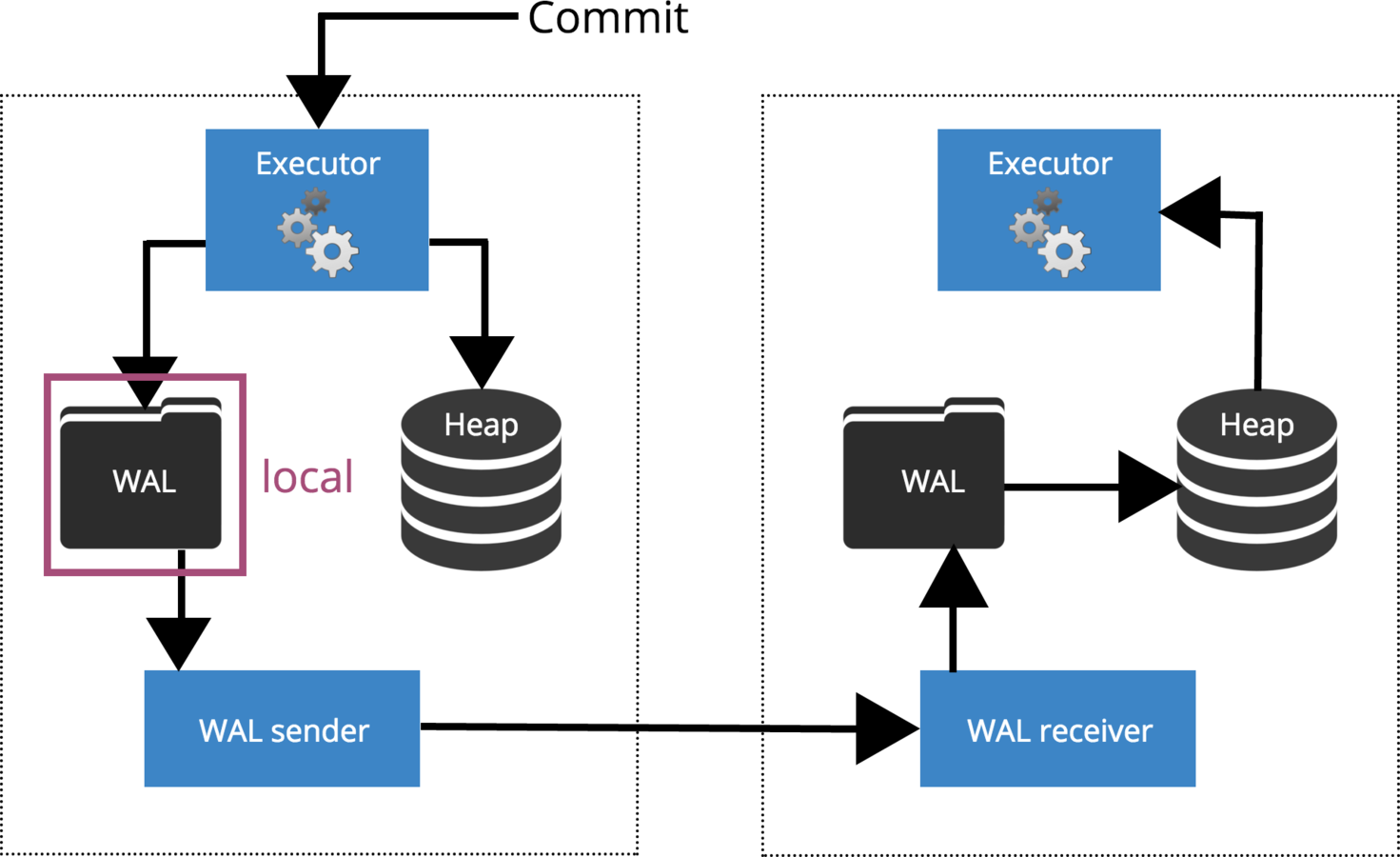
synchronous_commit = local
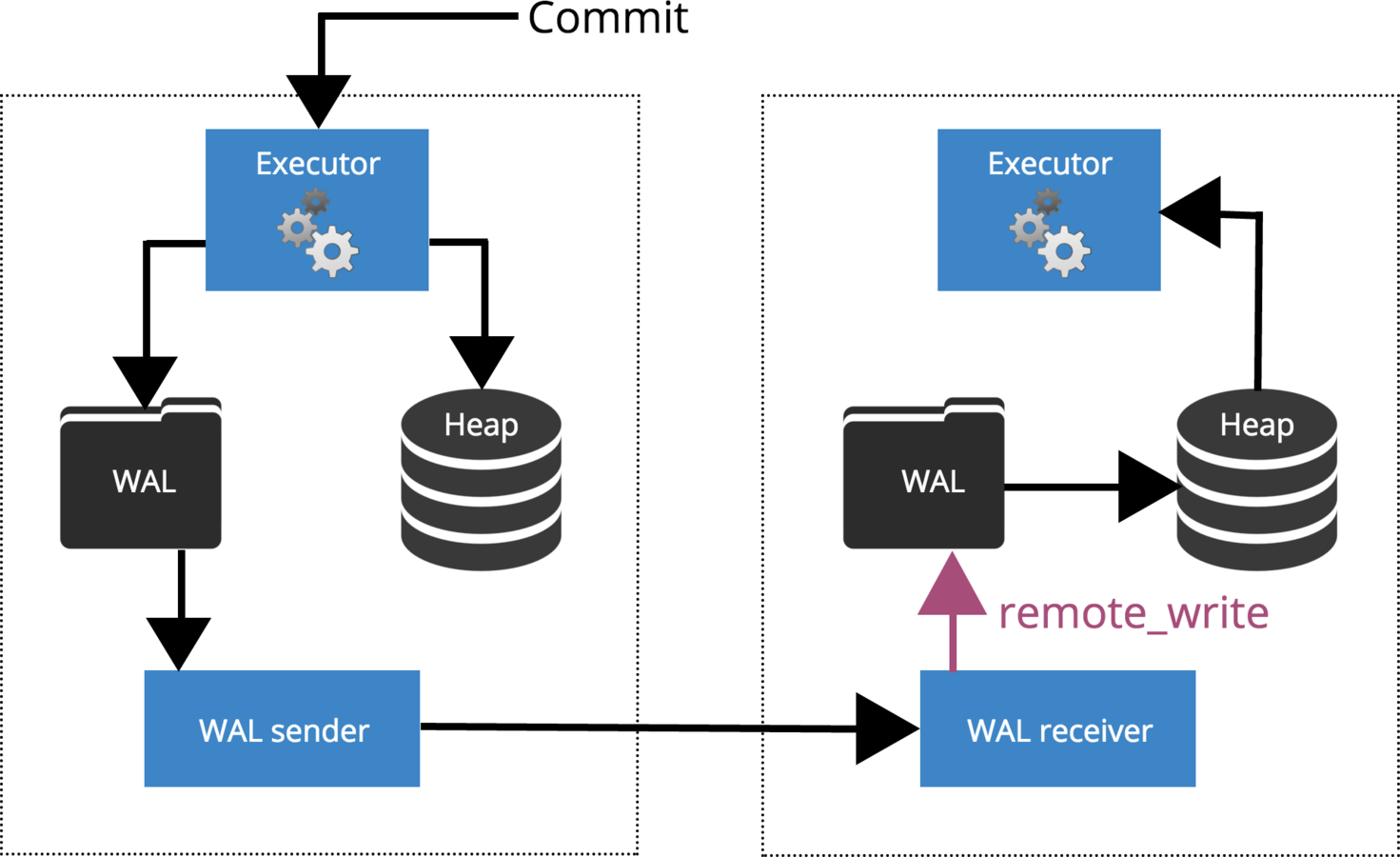
synchronous_commit = remote_write
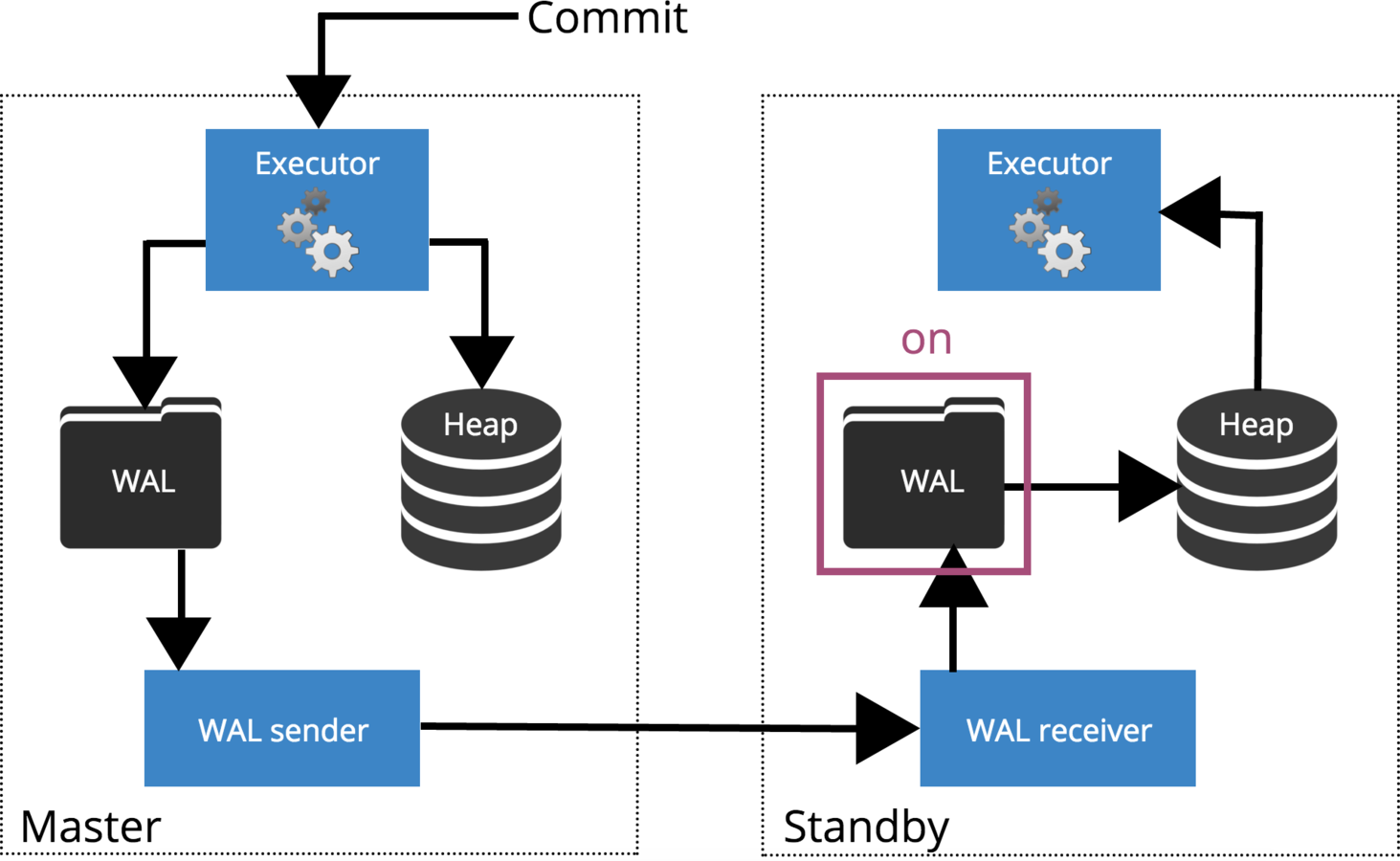
synchronous_commit = on
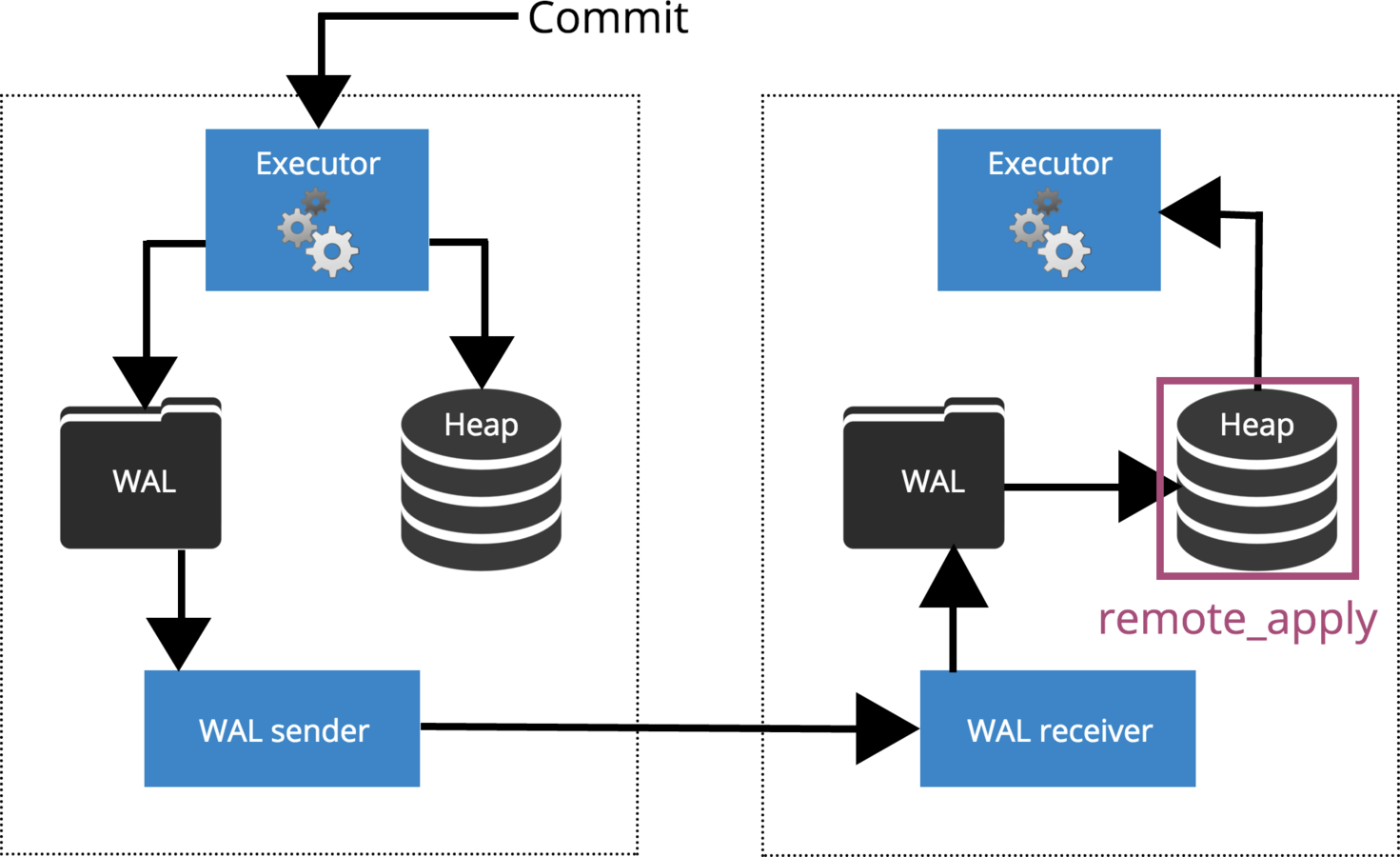
synchronous_commit = remote_apply
Logical replication allows us to stream logical data changes between two nodes.

Logical Replication
- Since PostgreSQL 9.4
- Extracts information from Write-Ahead-Log into logical changes (INSERT/UPDATE/DELETE)
- Committed transactions
- Per row and commit ordered
- No write amplification
- C API for output plugin
- Does not decode DDL
- Streaming (WalSender) Interface
Logical Decoding

Logical Streaming Replication
- PostgreSQL 10+
- Built on logical decoding
- Supports synchronous replication
-
Publish Subscribe Model
- CREATE PUBLICATION
- CREATE SUBSCRIPTION
- Based on pglogical extension
Logical Streaming Replication
- Replication alone is not enough
- You might need PITR
- How did backups evolve?
- Restore and Crash Recovery
- pg_basebackup
- Management of backups
Backups
Conclusion

What will be the next big leap of fault tolerance?
